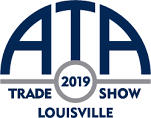 |
The first of the major trade shows for 2019 opens its doors tomorrow morning at 8:30 a.m. as the Archery Trade Association welcomes its members to Louisville, Kentucky, and the Kentucky Exposition Center.
As that happens, Archery Wire editor Michelle Scheuermann and I will be there, prowling the aisles and talking with industry insiders. We’re there to get a look at what’s new and cool - and the news we’ve already distributed this week indicates there will be plenty of new and cool to look at and try.
That’s great if you’re a media-type, but the point of the ATA, like SHOT Show, is to sell product to retailers. What’s selling is what I’m interested in finding out more about. That sets the tone for the rest of 2019- and what you can expect to see on store shelves.
That’s not to say getting media types interested in your products doesn’t have value. Our interest means valuable “unearned media” - the editorial coverage you don’t buy.
This will be the first ATA Show I’ve attended in a while. And I’m going to get a personal feel for how archery is doing as a business category.
It’s one of those specialty sub-categories with its own culture. If a subculture’s struggling, it impacts other areas.
Like fly fishing, archery is a subset of hunting and shooting. And like fly fishing, archery aficionados have their own language and criterion for what’s acceptable. That’s a lesson Iearned shortly after beginning The Outdoor Wire.
I mentioned a crossbow in the same sentence as a compound bow.
It was my first experience with total reader outrage.
The mere suggestion that crossbow shooting be considered “real archery” sent some readers completely off the deep end. After making some graphic, but anatomically impossible suggestions, a few clicked their “unsubscribe” buttons and left in a huff. Others stayed - and were very angry at me -for years afterwards. Some who stayed became the unofficial protectors of archery.
Why crossbows shooters weren’t considered “real” archers is a question I’ve never been able to find a clear answer for. Some answers imply that some bowhunters didn’t want anyone else in the woods during bowhunting seasons. Especially someone whose bow was capable of shooting further and faster than theirs.
To them, it didn’t matter that for some people with physical issues a crossbow was the only way they could start- or continue- hunting. Thankfully, most state agencies have moved beyond that attitude. No matter how you choose to “shoot” an arrow- the sport needs you.
Only the topics of commercial deer breeding and high fence hunting have ever kicked off anything approaching the furor of the matter of vertical versus horizontal bows.
So, for the rest of the week, I’ll be walking the ATA aisles looking at products designed to make archery better -no matter how you choose to participate.
I’m also going to try and get an insight into just what archery’s done that has made it so appealing to youngsters. NASP and S3DA are huge successes, and our sharing insights into what makes them so appealing might help other outdoor sports’ outreach more effective.
Some news releases we’ve distributed this week have again pointed out something that isn’t unique to archery -consolidation is happening across the industry.
From nutritional supplements to tree stands, scents and broadheads, archery is seeing to the absorption of smaller companies into larger ones.
For many small businesses, it’s a matter of survival. The business climate’s tough right now, and if you’re a company with little capitalization and no margin of error, adding your niched products into a larger operation makes sense. These businesses began because their owners were passionate about the sport, and saw a real need for a product that wasn’t there. With very few exceptions, a single-product or limited-product business isn’t viable.
That’s the part of consolidation that concerns me most.
Large companies with fixed operating costs look at new products differently that an entrepreneur who’s willing to bootstrap a good product to market.
If potential sales volumes or margin are in question, most big companies tend to take a pass on the concept. That number-centric approach doesn’t encourage innovation.
When innovation dies, homogenization is the best possible outcome.
And homogenization doesn’t drive participation. Nothing other than oxygen appeals to everyone.
So while we’re looking at the latest-and-greatest from the major players, we’ll be prowling the smaller exhibits looking for those undiscovered innovators. We want to encourage them.
We also want to share their information with you - because you can help them succeed.
There’s so much going on at this year’s ATA Show that we’re going to be publishing an Archery Wire Special Edition tomorrow morning.
Many of the companies apparently neglected to get their new product announcements to us in time to make the regularly-scheduled Tuesday edition.
Rather than our core archery audience missing out, we’ve elected to do the work necessary to put out a one-time Special ATA Show edition.
We’ll also include some helpful links to help attendees negotiate the show. That will include via links to the Archery Trade Association’s app and other information. They’ve worked hard to assemble almost anything you’ll need to help you get around the Show floor- and the city of Louisville itself.
All part of our promise to you: we’ll keep you posted.
—Jim Shepherd